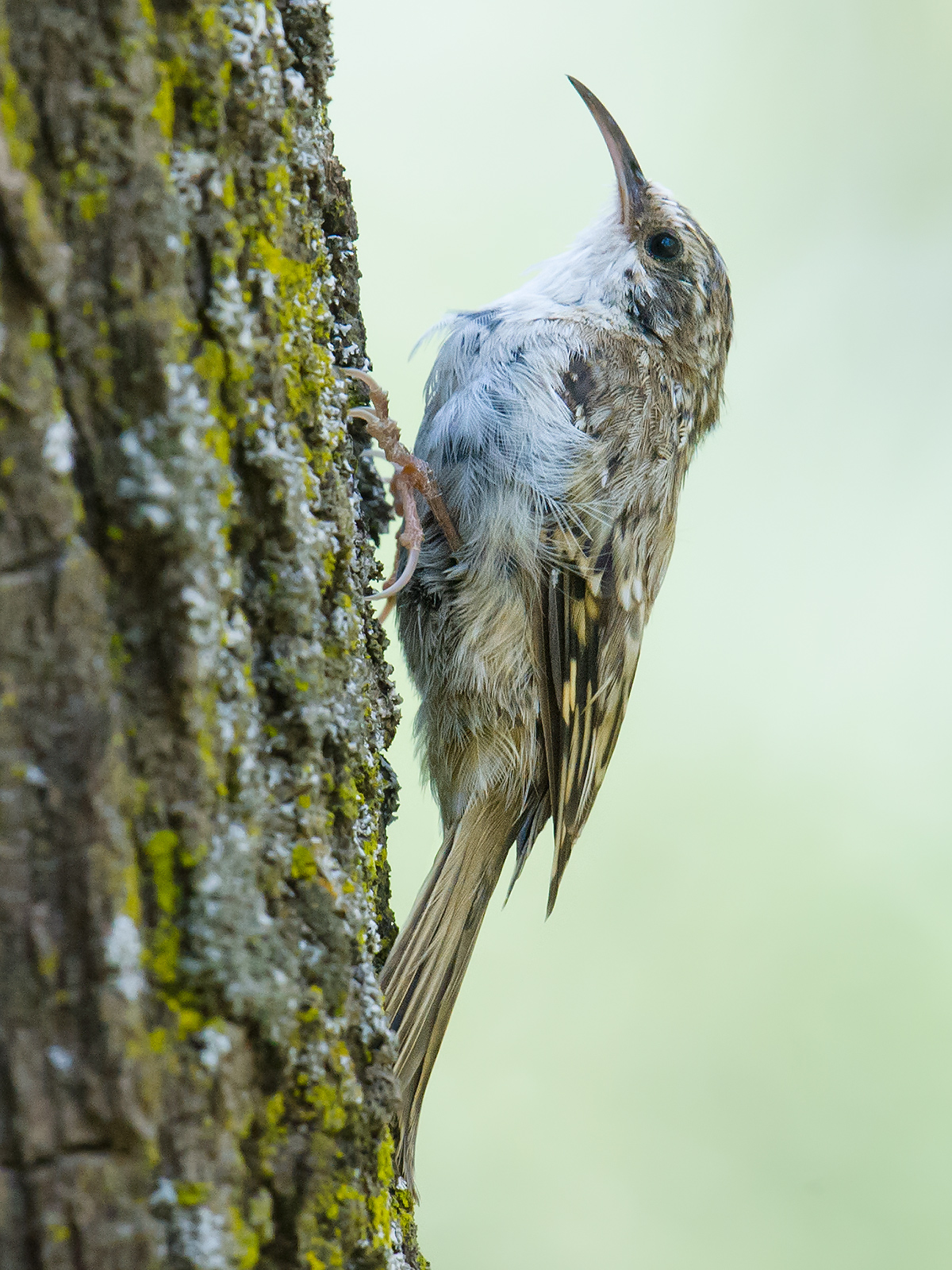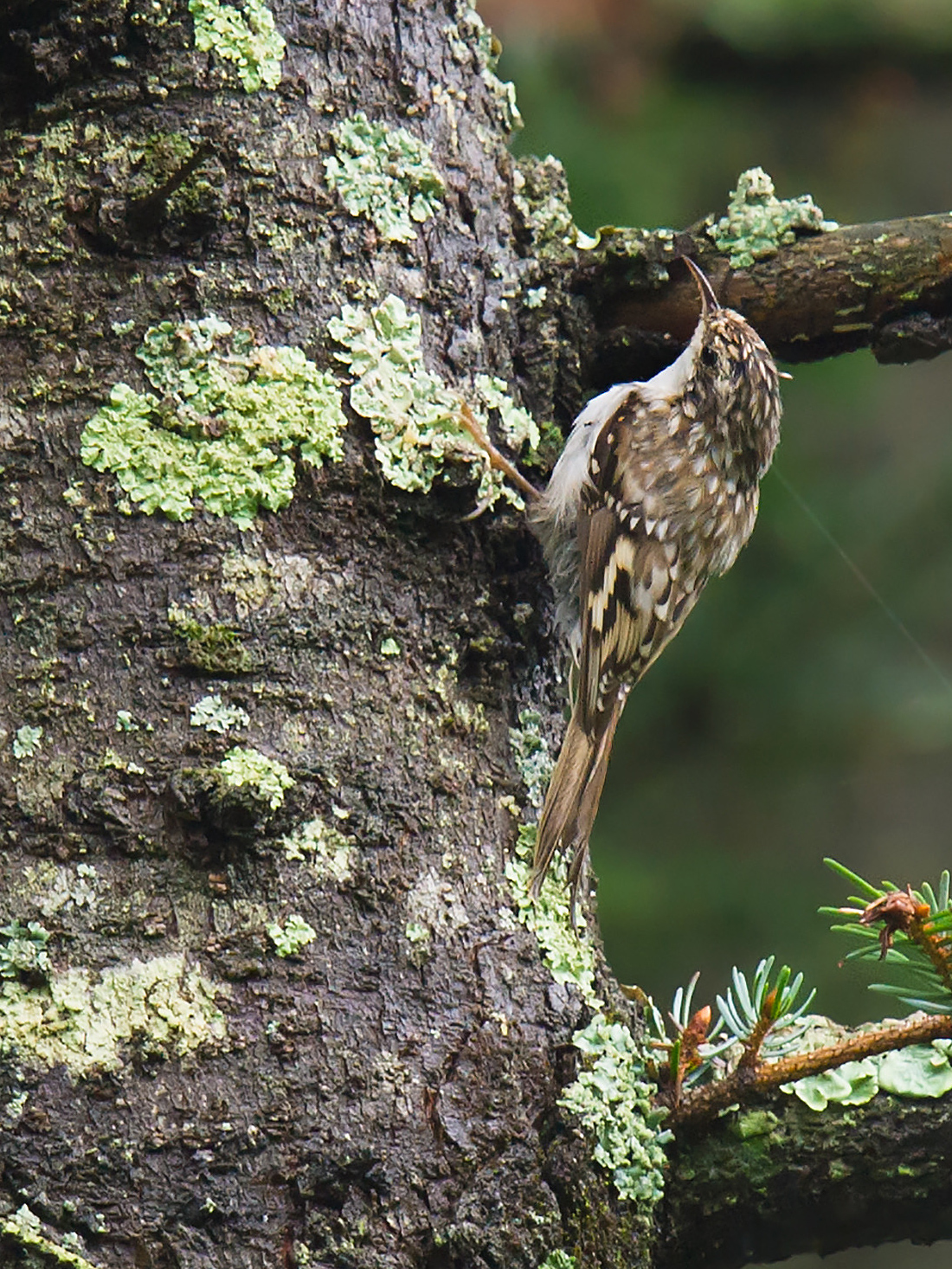

Eurasian Treecreeper Certhia familiaris is the treecreeper with the largest range, from Ireland to Japan. In China, daurica Heilongjiang to Liaoning, Hebei, and Beijing; tianschanica Xinjiang (Tianshan east to Kumul Prefecture); and bianchii eastern Qinghai (Qilian Mountains), southern Gansu (Min Mountains), Shaanxi (Qin Mountains) and Shanxi (Lüliang Mountains). Also reported Altai Prefecture, northern Xinjiang (subspecies unclear). HABITAT & BEHAVIOR Mixed coniferous and broadleaved forests, in China mainly in mountainous areas, in summer to 2650 m (8,700 ft.); in winter, lower and less choosy about habitat, but invariably requires trees. Spirals jerkily up trunks of large trees, using strong tail as prop, like a woodpecker. Largely unable to move down the trunk. Having reached top of tree, flies to base of next tree and creeps upward again. Also moves horizontally across boughs and on underside of branches. Eats spiders and insects gleaned from bark. Often alone or in pairs. ID & COMPARISON Very similar to Hodgson’s Treecreeper C. hodgsoni. Ranges abut in Qin Mountains, with C. f. bianchii on northern flanks and C. h. khamensis on southern. Eurasian has slightly fainter rufous rump and different song. C. f. bianchii slightly darker below (more dirty white, especially on rear flanks) than daurica and tianschanica. All races have cryptically patterned, mainly brown upperparts with variable white to buffish spotting and streaking; a white supercilium; black lores; brownish-black cheeks (smaller and more isolated than in most other treecreepers except Hodgson’s) with whitish center; a rusty-orange rump; and a long, stiff, brown tail. Wing pattern complex with several blackish and buff bands; wing coverts (including alula) have whitish tips (most prominent and wedge-shaped on greater coverts; primary bases buff; buff “stair-like” band on secondaries and primaries are separated by blackish, (on closed wing) arrow-shaped band from another, broader and less distinct, warm buff and “stair-like” band that runs closer to the tips of flight feathers; whitish tips of flight feathers demarcated by irregular blackish band just inside. Chin, throat, and belly white; flanks and vent with brown wash. Juvenile duller with less rusty rump. Bill black above, pale brown below. Bar-tailed Treecreeper C. himalayana has obvious black barring on the tail, tertials and primary bases, and a longer, more decurved bill. Sichuan Treecreeper C. tianquanensis has a shorter, straighter bill, slightly browner underparts, and a unique descending trill. BARE PARTS Feet large, pale brown, with long decurved claws (especially hind claw). VOICE High-pitched, thin calls: tsee-tsee-tsee (similar to Hodgson’s, but without rolling “r” character) or a longer srreee. Song a sweet, descending strophe, three seconds long and ending with an upturned twist. — Craig Brelsford
THE TREECREEPERS OF CHINA
shanghaibirding.com has research on all seven species of treecreeper in China. Click any link:
Eurasian Treecreeper Certhia familiaris
Hodgson’s Treecreeper C. hodgsoni
Bar-tailed Treecreeper C. himalayana
Rusty-flanked Treecreeper C. nipalensis
Sikkim Treecreeper C. discolor
Hume’s Treecreeper C. manipurensis
Sichuan Treecreeper C. tianquanensis
ACKNOWLEDGEMENTS
Daniel Bengtsson served as chief ornithological consultant for Craig Brelsford’s Photographic Field Guide to the Birds of China, from which this species description is drawn.
